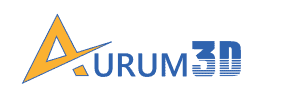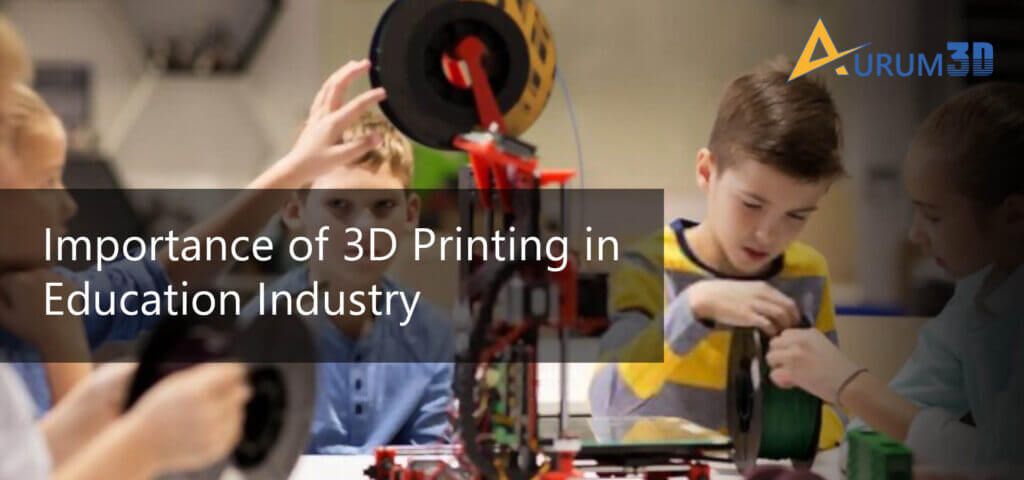The trends in educational technology change from time to time. The latest trends in education technology posted on various websites suggest that 3D printing is one of the technological trends that will disrupt the education industry in the short and medium runs. Like other organizations and enterprises, educational institutions will soon leverage low-cost 3D printing to produce a wide range of three-dimensional objects.
As an additive manufacturing process, 3D printing helps schools, colleges, and universities to promote next generation learning by combining theoretical approach, practical application and hand-on discovery. Many educational institutions already use consumer 3D printers to make students learn advanced concepts and unleash their creativity. The importance of the 3D printing in education industry can be understood based on a number of common and innovative use cases.
11 Innovative Use Cases of 3D Printing in Education Industry
Building Visual Learning Environments
Many educational institutions these days use videos and graphics to explain various concepts to students clearly. 3D printing creates opportunities for educational institutions to set up visual learning environments. In the visual learning environment, students will be able to see and touch the projects simultaneously. The teachers can use the objects generated using 3D printers to explain concepts to students using real-time information.
Transforming Digital Classrooms
Many educational institutions these days leverage computers and mobile devices to set up flipped classrooms and facilitate remote learning. Like computers and mobile devices, 3D printing has the potential to transform digital classrooms. Many educational institutions already leverage the technology to boost student engagement and interaction by integrating theoretical and practical approaches seamlessly.
Fostering Creativity and Sparking Innovation
The three-dimensional objects created using 3D printing technology will help teachers to make students adopt new ideas and innovative methodologies. The teachers can leverage the technology to empower students to experiment with new ideas and solve emerging problems. The schools and universities can revise their curriculum to spark innovation and foster creativity using 3D printing technologies.
Promoting Hands-on Training
The 3D printers enable users to bridge the gap between the digital and the physical. The feature helps educational institutions to promote hands-on training. For instance, the engineering students can use 3D printers to print prototypes physically. Likewise, the graphic design students can use 3D printers to convert their artworks into three-dimensional artworks. Also, the schools can use 3D printers to make students learn about natural disasters. The students get an opportunity to analyze and inspect the 3D objects physically.
Boosting Problem-Solving Skills
The educational institutions cannot produce inventors without emphasizing on problem-solving skills. In addition to accumulating a variety of learning experiences, 3D printing also helps students to solve a variety of problems. The students can use 3D printers to solve various problems and experiment with various ideas by printing three-dimensional objects. The process will prepare students to solve emerging problems and address new challenges proactively.
Launching Maker Labs
Many colleges and universities set up maker labs as do-it-yourself (DIY) space to encourage students to collaborate and invent new things. The 3D printers enable students to experiment with new ideas and create innovative products through sharing and teamwork. Also, the educational institutions can invest in low-cost 3D printers to encourage students to use their sharp minds and get their ideas evaluated by other students. In addition to fostering innovation, maker labs help students to develop comradeship and become team players.
Extending CAD Education
Many students these days learn computer aided designing (CAD) to create blueprints for a wide range of projects. CAD is an integral part of 3D printing. The 3D printers produce three-dimensional objects based on 3D models created using CAD applications. The students can leverage the CAD process in a better way by learning 3D printing technology. Hence, many educational institutions these days give options to students to learn 3D printing to visualize the end product designed by them on CAD systems. The students can further learn 3D printing to keep their CAD certification relevant in future.
Converting Digital Data into Prototypes
The engineering students often evaluate processes and concepts by creating prototypes. The conventional prototyping tools do not allow students to inspect and evaluate the prototypes physically. But 3D printing overcomes the major shortcoming of conventional prototyping tools by allowing students to print solid and three-dimensional objects that can be inspected and analyzed physically. Also, the students can use 3D printers to convert digital prototypes into physical objects. The leading engineering colleges invest in consumer 3D printers to help students create and evaluate prototypes in real-time.
Engaging Reluctant Learners
While creating learning environments, schools explore ways to engage reluctant students. The teachers often find it challenging to engage the reluctant students despite combining theoretical and practical approaches. The three-dimensional objects printed using 3D technologies will help teachers to engage and motivate the reluctant students. As they can touch and inspect the objects in person, the reluctant students will become active and enthusiasts in the new learning environment.
Incorporating Arts in STEM Education
Many educationists and educators these days explore ways to integrate arts into STEM (science, technology, engineering, and math) education. They believe that integration is essential to foster innovation. 3D printing technology enables educational institutions to integrate liberal arts and fine arts seamlessly into STEM education. While learning STEM, the students can use the cutting-edge technology to visualize their own imaginations.
Preparing Students for Future
In addition to being a disruptive technology, 3D printing is currently one of the top emerging technologies of 2020. Students can enhance career prospects in the near future by learning and leveraging this cutting-edge technology. Many educational institutions are already emphasizing on 3D technology as a part of integrated learning and curriculum. Also, some of them have developed new study programs based on 3D printing technology. More educational institutions will include 3D printing in their curriculum to prepare students for the future.
As a disruptive technology, 3D printing has started transforming the education industry. Many educational institutions already use 3D printing to facilitate real-time learning and fostering innovation. But educational institutions, which have not done that already, will need professional 3D printing service providers to implement the 3D printing labs in the campus to leverage the disruptive technology by overcoming constraints related to resources and skills.

